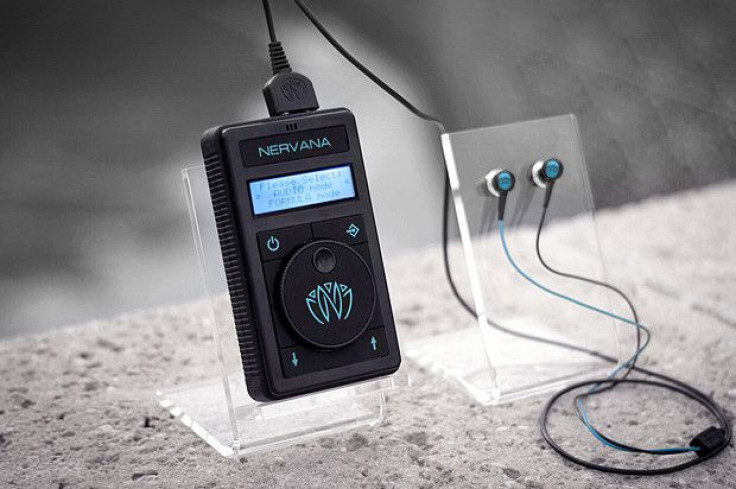New Headphones Stimulate Vagus Nerve To Deliver A Surge Of Dopamine With Your Tunes

The Sanskrit word “nirvana” describes the ultimate goal of the Buddhist path, which is to extinguish desire, hatred, ignorance, suffering, and even rebirth. Literally, the word means “blown out” and evokes the image of a candle’s flame, Encyclopedia Britannica explains. When applied to headphones, a new spelling of the same word may soon mean “blissed out.”
Nervana headphones deliver electrical stimulation to the vagus nerve with the beat of the music. Wearing these headphones, users feel their music — a tingling sensation in their ear — accompanied by waves of calm, relaxation, and relief in some cases.
“It’s like there’s another layer to the music,” one woman said after trying the headphones on The Doctors.
“I just kind of feel chill now,” said another user.
The pair of doctor brothers who devised the new technology say the headphones work by electrically stimulating a user’s vagus nerve. This in turn triggers a surge of the pleasure-producing neurotransmitter dopamine in the brain. Co-creators Richard and Daniel Cartledge say they’ve tested their product on hundreds of people, and proven it to be both safe and natural feeling.
What is the Vagus Nerve?
On each side of your body, a vagus nerve runs from your brainstem through your neck to your chest and abdomen. These nerves are the largest of the cranial nerves. Vagus nerve stimulation is a well known therapy commonly used to prevent epileptic seizures. Epilepsy patients receive a surgical implant similar to a pacemaker that sends regular, mild pulses of electrical energy to the brain via the vagus nerve on the left side of the body. (The right vagus nerve conveys nerve impulses to the heart, so it’s not used.) Because the stimulation is much less frequent in these cases, patients are generally unaware the device is operating, and they don’t experience a surge of dopamine. Recently, doctors have begun using vagus nerve stimulation to treat depression in cases where other therapies fail, and scientists are testing the treatment with a variety of conditions ranging from headaches to multiple sclerosis.
The Nervana device does not require surgery to access the nerve. It is portable, pocket-sized, and compatible with all genres of music, though the headphones require a generator to produce the nerve signals.

A dual jack conducts output signals from both a user’s music device and the generator through the cord to the headphone. While the right earbud receives and plays the right channel of the music signal in high-fidelity sound, the left earbud receives and plays the left channel of the music signal at the same time as it delivers electrical stimulation to the inside surface of the ear canal. This stimulates the Vagus nerve.
The generator has three modes: Music, Ambient, and Formula. The Music mode plays whatever music has been selected while stimulating the vagus nerve. Ambient mode also stimulates the vagus nerve, but replaces music with sounds from a user’s environment. And Formula mode simply stimulates the nerve without any accompanying sound. Users customize the settings to their taste with a sensitivity dial.
Though the headphones are not yet available, you can purchase them by backing the Boca Raton-based company’s project on Indiegogo. The first of many products the brothers are planning to develop, Nervana headphones are expected to ship by June.



























